It is not uncommon to see a harvest spotlight on this blog, but while we at The Dundee have focused mainly on the process of the winemaking in the past, (what happens once the grapes are picked) what might be overlooked is just how much variation, time, creativity, and spontaneity must go into deciding how and when to pick. A single clone in the same vineyard can taste drastically different from one year to the next, making the process of harvest a bit like a mystery box, unable to see the inside result until the first taste. We at The Dundee, however, recently had the privilege of talking with Kelly Stewart, the Hospitality Manager at Beaux Frères Winery, and he shared with us the inside scoop to the variations of each individual harvest.

Seated tastings are available daily by appointment.

One of Beaux Frères first wines was the Willamette Vally staple Pinot Noir.
To give you some context, let’s first talk a little bit about the history of Beaux Frères. The winery opened in 1986, when Michael G. Etzel, a wine salesman in Colorado at the time, traveled to Oregon because of a wine review he’d read and wanted to try. (How perfect is that??) On this trip he came across a pig farm with an adorable bungalow, fertile soil, and gorgeous hillsides. It flashed before his eyes: this would be where he started his own winery. With the help of his brother and sister-in-law, (Beaux Frere is French for brother-in-law) that dream became a reality and now Beaux Frères is a beloved staple of the Willamette Valley wine community, consisting of fifteen year-round employees, along with countless talented helpers from harvest interns, harvest chefs, and seasonal tasting room guides. The winery is currently run by Michael’s son, Mikey, keeping it all in the family while bringing a fresh and new perspective to their traditional Oregonian varietals.
Onto the harvest! One of the first things you might notice when visiting the Beaux Frères website is the general timeline of each growing season. Which months the vines tend to rest, and which months usually mark the bud break, flowering, fruit set, veraison, and first pick: many of the major milestones that make up each unique harvest season. But when talking with Kelly, he’s quick to tell you that each timeline is nothing more than a general guide. “There are countless different factors,” Kelly said, “that determine when grapes are ready to pick. Things like weather and elevation to the amount of shade received. Where in the valley was the vine planted and was this vine susceptible to Phylloxera (a disease which changes how much a vine will yield and the body of flavor it produces)? Kelly continued to give the example of the previous few years. “2020 had major wildfires,” he said, “so we had to throw out about 90% of our crop, which is unprecedented. 2021 was a rebound year, and our production bumped up to 12,000 cases. The following year we had 9,000 cases, which is a normal deviation. But there’s so much more involved. Last year, the vines started to bud on April 4th, but on the 9th we had a bad frost, which completely messed up the timeline. That had never happened before, and what it meant was having to wait for the secondary bud, which put us behind schedule and gave us a smaller quantity all together.”
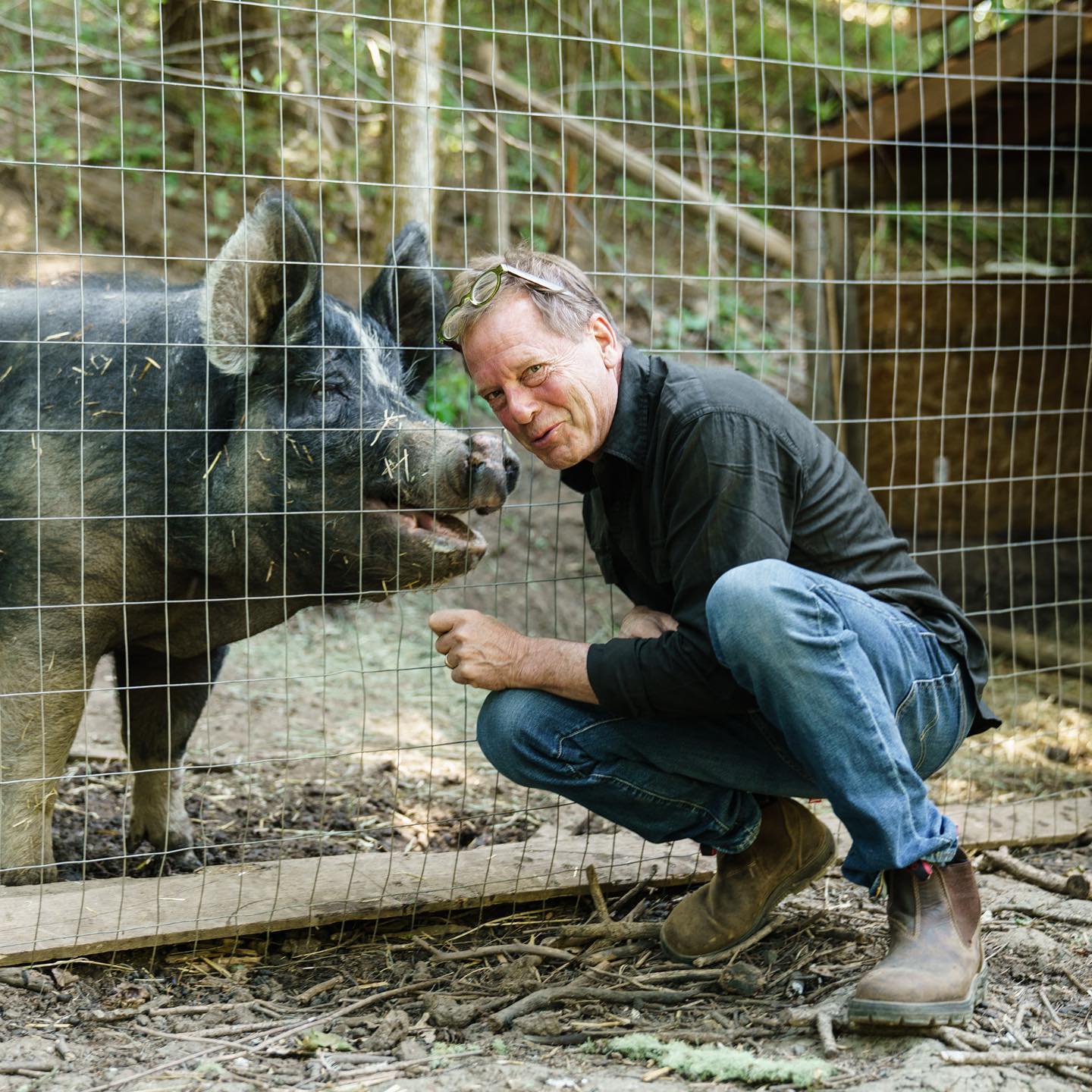
Founder Michael G. Etzel and one of the resident winery ambassadors.

For Beaux Frères it’s a family affair with son Mikey now running winery operations.
Even smaller changes can have a big effect. For example, Beaux Frères has kept many of its original trees on the property, the health of which can in part determine how much or little shade certain vines receive, while others bask in full sunlight throughout the season. For fun, let’s say the flowering starts on schedule (huzzah!). Flowering is still delicate, so if there’s a particularly windy day that knocks off a large portion of the overall yield, that’s your fruit now gone. If a heavy rain or hail comes, the effect will be even more extreme. All of these things determine what a particular harvest might look like.
After bud break, flowering, and fruit set comes veraison, where the grapes change color. This, in part, determines how much acid and sugar you can taste, as well as what the grapes will look like. Sun and rain can change the veraison of different areas so much so that some vines, which may have tasted similar in the past, might turn out with completely different profiles this season. It might seem at first like a particular harvest is going to be a big fruit vintage, but then storms come in and all of a sudden, the vines soak up the water and the grape flavor changes again.
“Honestly though,” Kelly said, “at this point, it’s still mostly about the logistics of the harvest, like how much we might produce, which tells us how many barrels we need to order. Because when it comes to flavor, you just have no idea. It’s hard to assess until the fruit is sampled. If you followed someone and took note of every change from now to tasting, it would just be a roller coaster. You can taste one day and say, ‘This is like our 2014.’ Then you’ll taste the very next week and say, ‘Actually, 2019.’ It’s a delicate balance.”
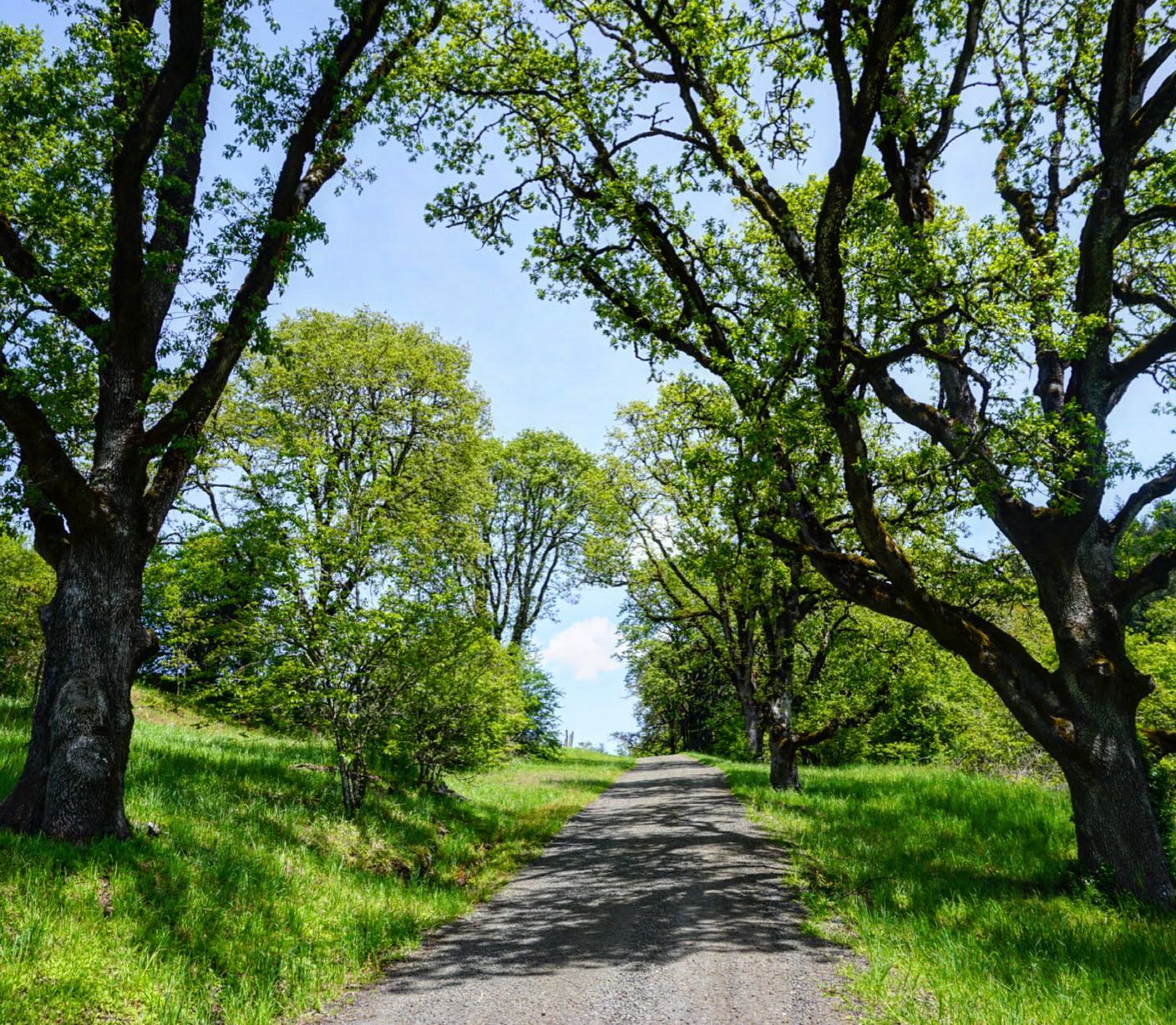
The foliage in the vineyards plays a key role in the evolution of the vines and fruit.
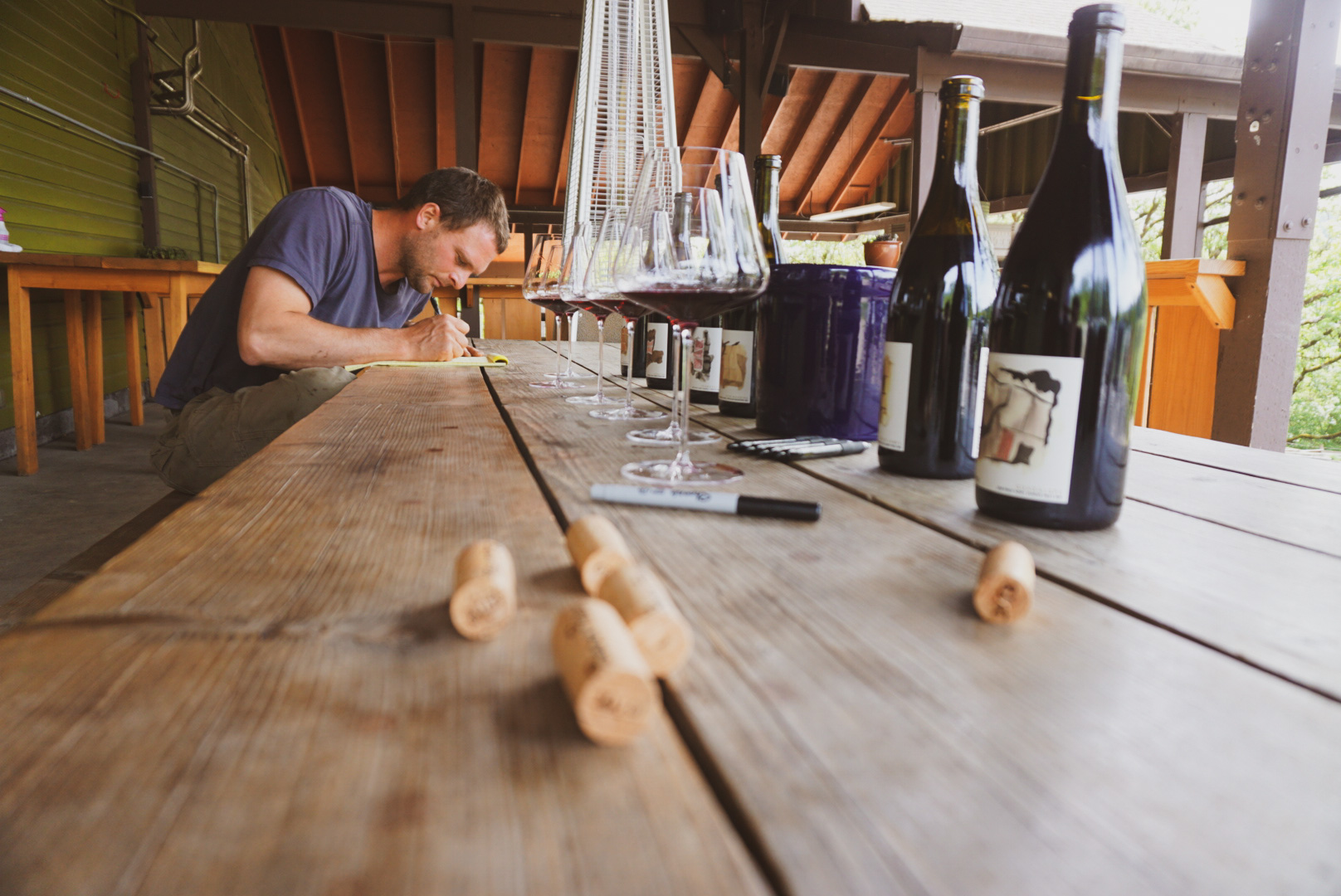
Winemaker Mikey prepares tasting notes.
So, what does this year look like? “We started off a little late,” Kelly said, “because we had a cold, wet spring. Bud break bordered on May, and then once flowering happens, it’s typically 100 days until harvest begins.” So we’ll see!
Contrary to what many believe, harvest is not one singular event. All of the vineyards yield different results, which means they’ll be ready for picking at different times. This is especially true with different elevations because the temperatures and weather patterns are so different. And every year a vintage is unique. “Sometimes people will try something and think, ‘Oh, I like that because it’s a Pommard Clone’,” Kelly said. “But it’s way more than that. It’s a Pommard Clone from that rootstock, from that year, with that weather, and that amount of sunlight and that amount of shade, that had such and such amount of wind at that particular elevation. Young vines ripen early, and Chardonnay is often picked early because of its acidity…the list goes on and on. It’s like saying you love a specific chili because there’s garlic powder in it. I mean, there is, but there are so many more things involved.”
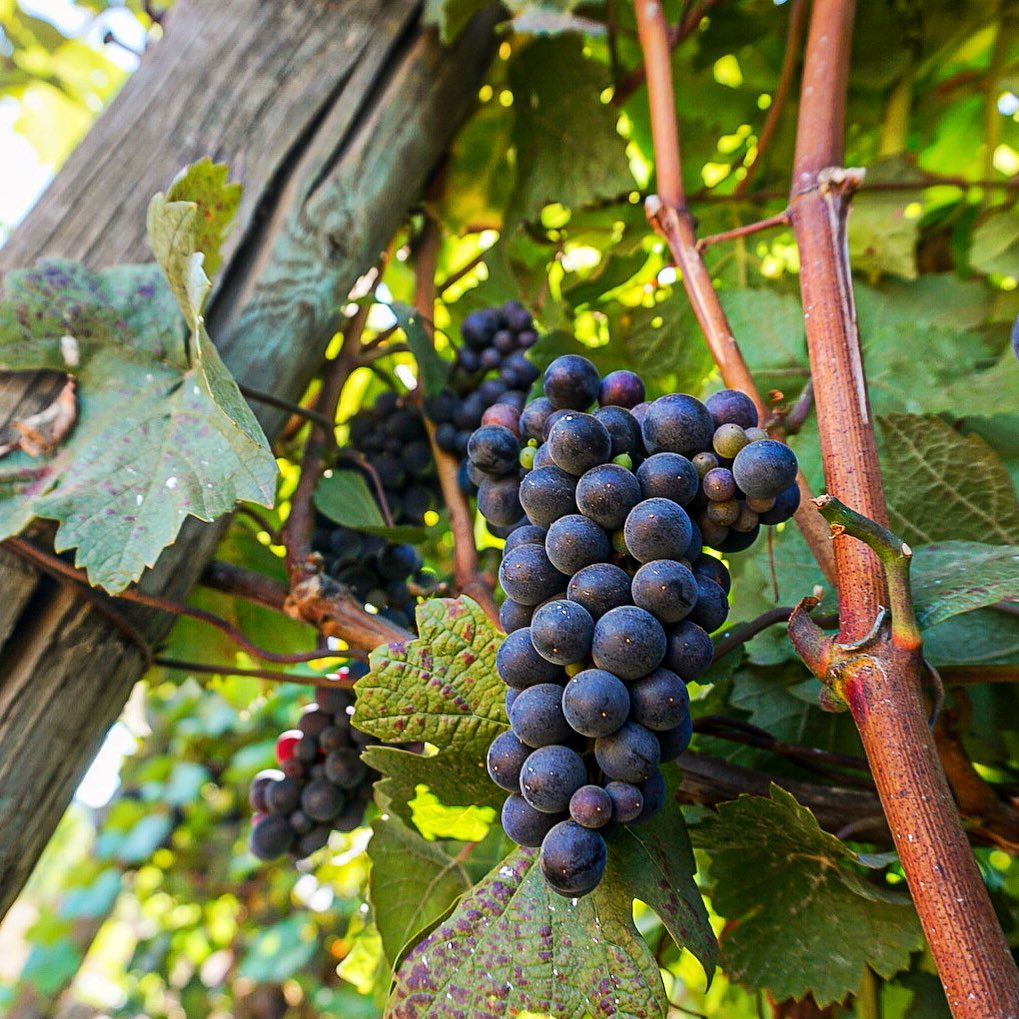
The decision on when to harvest the fruit is crucial to the final composition of the wine.
So let’s say it’s finally time to taste the grapes: what comes next? “The winemaker decides,” Kelly said, “but sometimes we have our harvest interns taste the grapes as well because they have this newer, pure opinion, not tainted by overanalyzing them. We also weigh the clusters to guestimate how much we’re going to make.” After harvest, the vineyard stewards prune the vines, which then go dormant until the following spring.

The joys of accomplishment at the end of harvest.
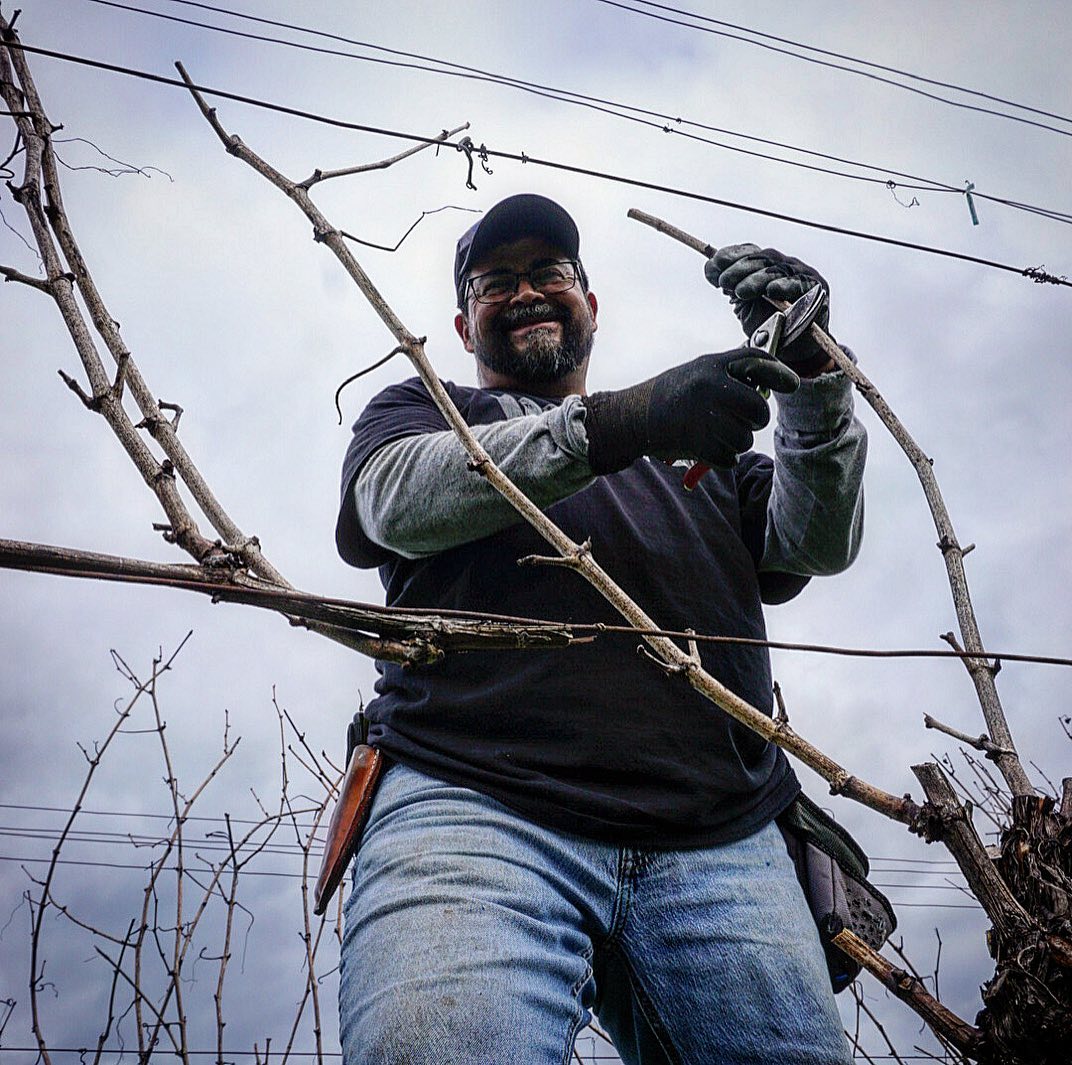
The experienced team getting things ready for next season.
However, it’s important to note that there is one aspect of harvest that never changes, and that is Beaux Frères’ commitment to sustainable and biodynamic farming. As the website says, “We have found that avoiding commercial sprays in favor of gentle tonics like dandelion and stinging nettle tea leads the way to a symbiotic relationship with our landscape. We compost on-site, graft our own cuttings, and take great care to observe and connect with the vines regularly.” This is one way the winemaker and staff can honor the land that provides for them.
That brings us to the second aspect of harvest, Beaux Frères’ philosophy when it comes to making wine. “I’d say it’s a feel place,” Kelly said. “It’s 100% based in the moment. People will ask us, ‘How much whole cluster do you use?’ And the truth is, we have no formula. Sometimes it may be about 20%, other times we add more, and some years we add none at all. Mikey looks at the fruit and stems, and decides from there.” With that said, Kelly made sure to add that they do measure the sugar and PH, but once they have an idea of those numbers, they go mostly on taste and flavor. “Mikey really wants to encapsulate place and feel. He doesn’t just want it to be a certain wine, it should represent this vineyard and this harvest.”
We asked Kelly about his favorite aspects of working at Beaux Frères, and without a moment of hesitation, he said, “The family, and the people I work with.” In addition to that though, he added, “Beaux Frères is also very hands on. Some wineries have their tasting room separate from everything else. But as anyone tasting here can see, not only do we taste here, the grapes are sorted and processed here too. And I think it’s nice for customers to see the process, not just beyond a glass wall, but right here. Fermentation is also right behind the tasting room, and that’s the best way to learn. Even for me, when I started working here I didn’t have to memorize information and then regurgitate it. When people ask me questions, I can answer them because I’ve seen it over and over again. We’ve even had fermenters in the tasting room. We are all in the center of it. There is no ‘other’ department.”
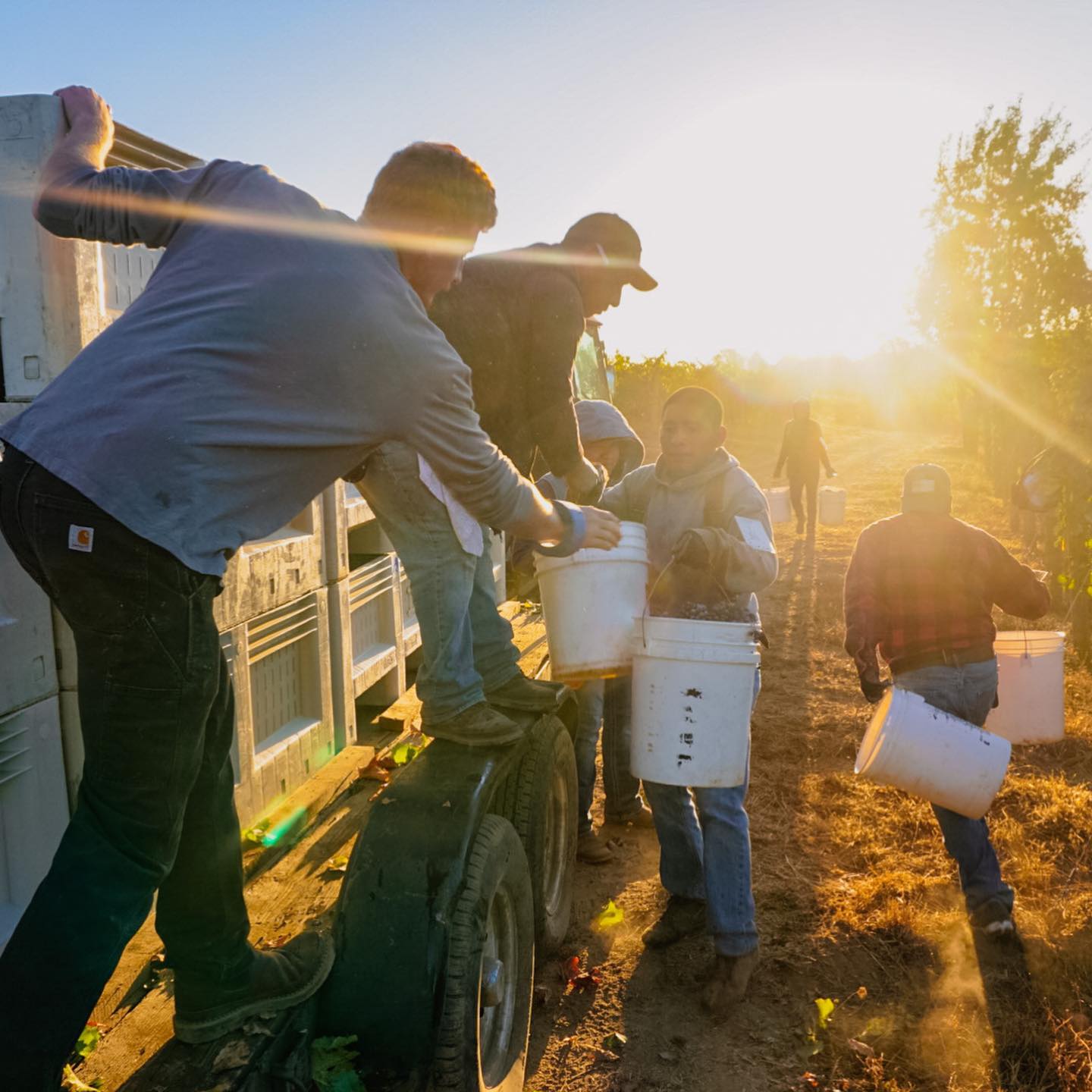
It’s all hands on deck during the harvest season.

There’s no time like the present for you to be in the center of harvest too! So make sure to reserve your tasting at Beaux Frères soon, or ask us to save your spot next time you’re staying with us here at the hotel!

